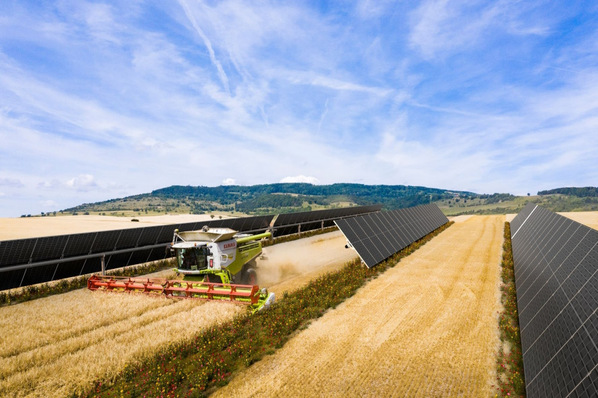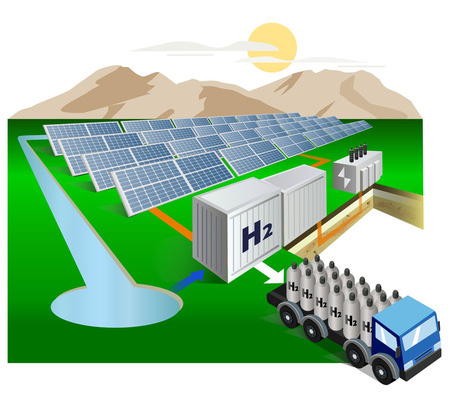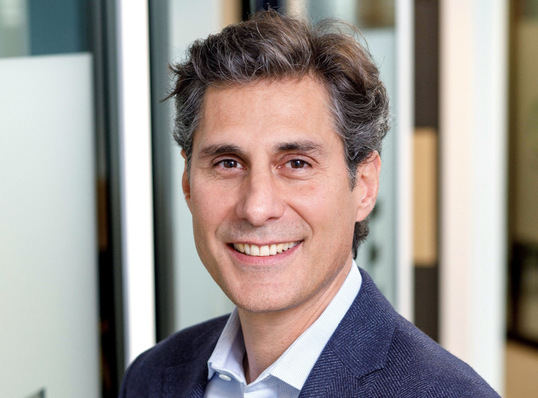Almost one year ago, the first kilowatt hour flowed out of Weesow- Willmersdorf and now the solar park has been formally inaugurated. With the construction of the solar park roughly 30 kilometers east of Berlin, EnBW has opened a new chapter in the story of photovoltaics in Germany. Its 187 megawatts can supply up to 50,000 household each year with eco-friendly electricity. This is currently the biggest open-field solar power plant in Germany. Furthermore, EnBW built the solar park with no funding through the Renewable Energies Act (EEG).
It is a new way of ramping up the use of solar energy in Germany, as EnBW board member Georg Stamatelopoulos explained in his speech at the official inauguration ceremony. “We must be faster and more digital in order to increase the pace of expansion for renewable energies. Processes must be streamlined and legally sound. The relevant authorities also need additional staff,” he said. Given the German government's aim of raising the level of gross energy consumption met by renewable energies to 65 percent by 2030, there would have to be an annual increase in photovoltaic capacity of 10,000 megawatts – twice as high as the figure to date.
Good interaction for the energy transition
There was good interaction between the administrative bodies, government agencies, local authorities and the people who live near to the location for this project. The construction approval process involving the authorities and the district of Barnim was completed in just five months. Werneuchen Municipal Council also embraced the development and land-use planning process. Stamatelopoulos thanked the local people for backing this energy transition project.
Did you miss that? PPAs for subsidy-free solar power on trend
Andreas Feicht, State Secretary at the Federal Ministry for Economic Affairs and Energy, welcomed the guests and said: “The Weesow-Willmersdorf solar park shows us how the future of renewable development can look. With projects that consider the climate, nature and species conservation as a whole, are planned in close consultation with local people and institutions, while being built without the need for EEG funding. I hope that this example will catch on and be replicated elsewhere, then the energy transition in Germany will succeed.”
Also interesting: How Germany can become climate-neutral by 2050
Annual generation of around 180 million kilowatt hours of power will cut carbon emissions by about 129,000 tons per year. EnBW itself has set a target of achieving net zero emissions by 2035. Between 2021 and 2025, the company invested around four billion euros in renewable energies. It is currently building another two major photovoltaic projects, each with a capacity of 150 megawatts, not far from Weesow-Willmersdorf solar park, thereby creating a unique solar cluster in Brandenburg made up of three large solar power plants.
A tranquil habitat for foxes, rabbits and others
With an area covering 164 hectares, the entire solar park site has been designed as a biodiverse green space. Another 45 hectares belong to the project site. Part of this area is occupied by public pathways that run through the solar park and are used by walkers and riders. EnBW is planting native deciduous and fruit trees on the additional space, including maple, oak, and mountain ash as well as apple and pear trees. Plus there will be over 16,000 bushes – including hornbeam, dogwood, hawthorn, and many other species – as soon as the weather conditions are right for transplanting them from the nursery.
Thirteen stepping-stone biotopes provide shelter for small animals. Photos captured by wildlife cameras show that the solar park is proving to be an attractive habitat for the fauna of the region. The fox and rabbit bid one another good night here. (hcn)
Click here to sign for pv Europe`s newsletter twice a week







